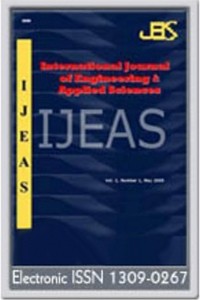Aerodynamic Numerical Testing of Megawatt Wind Turbine Blade to Find Optimum Angle of Attack
Wind energy is one of the oldest kinds of energy source used by mankind and it is dating back to thousand years. At the beginning of twentieth century, multi blades wind turbines were improved and used for charging in USA. After oil crisis in in the seventies, there was a surge of alternative energy sources in USA, Denmark and Germany. In terms of installed capacity, Germany had the leadership until 2007, then it passed to USA and finally China becomes the leader. Today, 6 MW capacity wind turbine are available in the market. The majority of the airfoils in use on horizontal-axis wind turbines today were originally developed for aircraft but it has been begun to design airfoil especially for wind turbine for 20 years. S series airfoil poses the most significant examples designed by NREL. In this study, S809 airfoil was simulated using the SST turbulence model and compared with experimental data to validate simulation accuracy of the computational fluid dynamics and this calculation. After verifying the consistency of the simulation model, S830 airfoil was simulated with different Reynolds numbers or velocities. Lift and drag coefficient, lift to drag ratio and pressure coefficient were calculated and compared
Keywords:
Renewable energy, wind power, wind energy, Airfoils S830, NACA airfoil, optimum angle, lift and drag,
___
- [1] Sayed, M.A., Kandil, H.A., Shaltot, A., Aerodynamic analysis of different wind-turbine-blade profiles using finite-volume method, Energy Conversion and Management 64,541–550, 2012.
- [2] Gul, M., Uzol, O., Akmandor, I.S. An Experimental Study on Active Flow Control Using Synthetic Jet Actuators over S809 Airfoil, Journal of Physics: Conference Series 524-012101, 2014.
- [3] Sogukpinar, H., Bozkurt, I. Calculation of Optimum Angle of Attack to Determine Maximum Lift to Drag Ratio of NACA 632-215 Airfoil. Journal of Multidisciplinary Engineering Science and Technology Vol. 2, 1103-1108, 2015.
- [4] Thumthae, C., Chitsomboon, T., Optimal angle of attack for untwisted blade wind türbine. Renewable Energy 34, 1279–1284, 2009.
- [5] Wolfe, P.W., Ochs, S.S. CFD Calculations of S809 Aerodynamic Characteristics, AIAA, 97- 0973, 2015.
- [6] COMSOL CFD, Module user guide. http://www.comsol.com, 2015.
- Başlangıç: 2009
- Yayıncı: Akdeniz Üniversitesi
